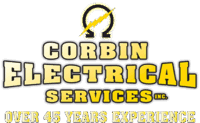 As a coastal state, New Jersey gets its share of fall hurricanes and winter storms. That’s why so many of the state’s residents rely on home generators to make sure they’re not left in the dark – and the cold – when fall and winter weather starts causing trouble.
As a coastal state, New Jersey gets its share of fall hurricanes and winter storms. That’s why so many of the state’s residents rely on home generators to make sure they’re not left in the dark – and the cold – when fall and winter weather starts causing trouble.
Of course, owning a generator is just the first step in protecting against power outages. Once you have a standby generator, you have to be sure you take the necessary steps to keep it in good working order. If you haven’t prepared your standby generator for the upcoming cold weather season, here’s what you should do:
First, find out if your generator manufacturer offers a cold weather kit, or weatherization kit. These kits typically contain all the parts and accessories you need to help ensure your generator will be ready to handle the nastiest weather, including those autumn hurricanes and winter ice storms that just love to visit the Garden State. If your manufacturer doesn’t offer a kit or if you prefer to buy your items separately, here’s what you’ll need:
- Battery warmer: You can choose from a manual warmer that requires you to turn it on and off or a thermostatically-controlled warmer that turns itself on and off depending on the surrounding temperature. Obviously, thermostatically-controlled units are far more convenient, and they’ll work even when you’re not home.
- Oil warmer: Oil is the lifeblood of your standby generator, keeping parts lubricated so the entire engine works the way it’s supposed to. But in cold weather, oil can become thicker, resulting in increased levels of friction that can cause excessive wear and tear. An oil heater helps maintain oil at the proper heat and viscosity for optimal performance once the temperature plunges.
- Covers and other accessories: Covers don’t just provide an additional layer of insulation – they also keep out dust, debris and insects. Other possible accessories include frost prevention devices to keep ice from building up around your alternator and intake.
Finally, if you need to use your generator this fall or winter, you’re going to want to know how to operate it safely. The first source for tips for proper operation of any generator is the manufacturer’s manual. Be sure to read it over thoroughly and to follow all guidance regarding the safe operation of your home generator. Online, the Centers for Disease Control and Prevention (CDC), the National Safety Council (NSC) and the American Red Cross all offer safety tips to help consumers avoid accidents when using their generators.
Not sure if your generator is ready to take on the cold? At Corbin Electric, we’re ready to provide you with everything you need – from accessories to tuneups – to get your generator ready for all Mother Nature has in store. Call us today at (732) 536-0444


